2015-02-27
Yep, it’s viral . . . .

Musings on biblical studies, politics, religion, ethics, human nature, tidbits from science


First, Alternet, and now it’s on Salon.com

Valerie Tarico’s article is published in Alternet:

Correction (27 Feb 2015): I should have given priority to Alernet's publication of Valerie Tarico's article. It was published on Alternet a day before it also appeared on her blog.
***
Valerie Tarico last September ruffled a few feathers with her article on mythicism (see Fear in the Heart of a Bible Scholar) and then followed up with an article in The Humanist outlining the views of James McGrath, Raphael Lataster and yours truly. (See Savior? Shaman? Myth? Ink Blot? — Views of Lataster, McGrath and Godfrey).
Valerie’s most recent post is
Nine “Facts” You Know For Sure About Jesus That Are Probably Wrong
It’s not about mythicism this time but it does link to four Vridar posts to illustrate some of her points.

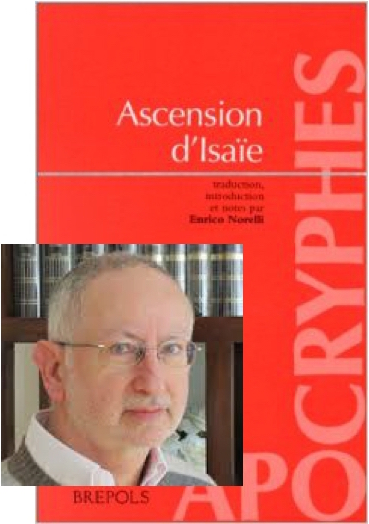 Last month I began posting on Enrico Norelli’s arguments concerning the Ascension of Isaiah:
Last month I began posting on Enrico Norelli’s arguments concerning the Ascension of Isaiah:
I am quite sure Norelli’s new perspective won’t be the final word. Before I can come to any view myself, however, I obviously need first to understand at least the core of his analysis. So as I plough through the slim French language popular summary of his argument I will copy chunks of my bad translation and semi paraphrase here. This section covers pages 48 to 52 of Ascension du prophète Isaïe and continues on from the post Asc. Isa.: Contents, Manuscripts and the Question of its Composition. I have added translated text from the Asc. Isa. at earlychristianwritings.
In this section Norelli is explaining why be believes the Asc. Isa. is independently adapting a source also known to the author of the Gospel of Matthew. That the composer of the Asc. Isa. could do this is a sure sign that he was writing before a time when the Gospel of Matthew took on any authoritative status.

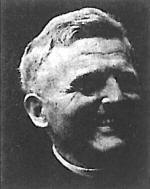
Sometimes I like to lull myself to sleep at night by reading obscure books about Biblical Greek. I recently picked up a real snore-fest by Maximilian Zerwick called Biblical Greek: Illustrated Examples. Early in the book Zerwick talks about a phenomenon in Greek, which also exists in English, in which the third person plural refers to some general, anonymous group, usually best translated as “they say” or “people say.”
In German and French, there’s a singular form (“man sagt” and “on dit“), but in English we have the same sort of thing as in Greek. For example:
They say a little knowledge is a dangerous thing, but it’s not one half so bad as a lot of ignorance. –Terry Pratchett (Equal Rites, emphasis mine)
As Zerwick rightly points out, we usually see the indefinite plural with verbs of telling, hence in Latin: “dicunt, ferunt, tradunt.” It’s possible that indefinite plurals were common in Aramaic, which Zerwick suggests may have influenced Mark. He writes:
This is perhaps why it occurs with especial frequency in Mk, often, in parallel passages, corrected by Mt, and still oftener by Lk. . . . [I]n Mk (3,21) we read a text which seems offensive to the honour of the Mother of God: ἀκούσαντες οἱ παρ’ αὐτοῦ ἐξῆλθον κρατῆσαι αὐτόν, ἔλεγον γὰρ ὅτι ἐξέστη [akousntes hoi par’ autou exēlthon kratēsai auton, elegon gar hoti exestē]. These παρ’ αὐτοῦ [par’ autou] are later (v. 31) said to be “His mother and his brethren.” Were they necessarily the ones who thought Jesus was deranged? (Zerwick, 2011, p. 2)
In most English translations, the meaning seems to be that Mary and Jesus’ brothers thought he had come unhinged.
And when his family heard it, they went out to seize him, for they were saying, “He is out of his mind.” (Mark 3:21, ESV)
“His family heard” . . . “they went out” . . . “they were saying.” Simple, right? Continue reading “Did Jesus’ Mother and Brothers Lose Faith in Jesus?”


Familiarity with the stories of Jesus’ birth can blind us to recognizing just how bizarre are some of their details. Okay, maybe the virgin birth itself is bizarre but I recently read one reasonably well-known scholar opining that even that may not be so bizarre when we stop and recollect the ability of certain animals such as Komodo Dragons to reproduce by parthenogenesis. The scholar stopped short of speculating how it was that Mary came to be born human-like yet presumably with reptilian internal organs or the nature of the children she later bore to Joseph.
The Gospel of Luke opens with the angel Gabriel dropping in on two earthlings without the courtesy of advance notice. The first was the very elderly priest, Zechariah. Gabriel interrupted him during work hours in the Temple causing a religious ceremony to be unceremoniously held up in midstream, told Zechariah that he and his equally elderly wife were going to have a child and then cursed him with the inability to speak for daring to ask how any couple well beyond menopause could possibly bear children.
Six months later the same Gabriel dropped in on Mary. Now Mary, Luke tells us, was a virgin engaged to be married to Joseph. We are not told when they were planning to marry but no doubt Mary spent a lot of time thinking about that day and what married life with Joseph would be like.
 Gabriel told Mary that she was going to have a baby boy and that she was to name him Jesus.
Gabriel told Mary that she was going to have a baby boy and that she was to name him Jesus.
Mary immediately forgot she was engaged to be married and so asked Gabriel how that was possible since she was, well, not married. Mary’s question was as dumb as Zechariah’s was smart.
Mary’s question is very puzzling: why should a woman about to marry wonder at the notion that she will soon conceive? (Randel Helms, Gospel Fictions, p. 51)
So what’s going on here? Why does Luke make Mary look so absurdly naive? Continue reading “Mary’s Strange Question (and stranger anatomy!)”

Continuing the series from Nur Masalha’s Expulsion of the Palestinians. . . .
The reason for this series is to make readily accessible the evidence that helps us understand the current situation in Palestine. This evidence informs us of the intentions and goals that the Zionist leadership had for the way their Jewish state would look and operate into the future. (Once complete I will compile the posts into a single block.) Some readers have asked me to focus on the events of the 1948 war between Israel and the Arab states because that is where the real roots of the current problems are found and I do hope to write about the 1948 war and detail the origins of the refugee. One of the several Jewish historians of this period that I will refer to will be Benny Morris who fully justifies the events that led to the dispossession of the Palestinian Arabs. It should go without saying that nothing in these posts can validly be construed as anti-semitism or justification for the murderous crimes of any form of terrorism.
Deep breath. Here we go again.
The previous post, The Necessity for Mass Arab Transfer, outlined the responses of the various Jewish factions towards the British government’s Royal Peel Commission Report in 1937. This post covers the Jewish Agency’s response to the question of Arab transfer after their rejection of the Peel Commission’s plan for partition of Palestine.
The Twentieth Zionist Congress empowered the Jewish Agency to negotiate on the precise terms of the future Jewish state. To prepare for this the Agency established several advisory bodies including one (November 1937) named the Population Transfer Committee. Some of the members are listed below. Notice how many of the names became prominent leaders of the new state of Israel once it was established.

At the 21st November 1938 meeting Weitz introduced his plan for Arab transfer explaining it was based on two main assumptions:
the transfer of Arab population from the area of the Jewish state does not serve only one aim — to diminish the Arab population. It also serves a second, no less important, aim which is to evacuate land presently held and cultivated by the Arabs and thus to release it for the Jewish inhabitants.
For the above reasons most agreed that any evacuation had to start with the most difficult challenge: the transfer of the peasants and rural population. Only then would the new government turn its efforts to removing the townspeople.
The second assumption arose out of Britain’s backing away from any idea of compulsory transfer in its submissions to the League of Nations. This left the Jewish committees without any visible force necessary to carry out Arab transfers.
Weitz calculated that this first transfer phase would remove 87,300 Arabs and the purchase of 1,150,000 dunums mostly in Transjordan for their resettlement. A further 10 to 15 thousand Bedouins living on livestock could also be removed in this phase.
That would give to the Jews an extra 680,000 dunums that included 180,000 dunums of irrigated land.
Such a plan would see the Arab population reduced by one third within two to three years.
The chairman of the committee, Thon, agreed with Weitz that the plan was practical as a first step.
Bonné opposed plan. He wanted to see a plan for the removal of all the Arabs within ten years. He also recommended that the committee not give up so easily on the idea of compulsion. Compulsion had been first suggested by the English, he said, and besides, they were not talking about “full” compulsion since they wanted as much cooperation as possible helped along by the application of some pressure.
The solution, Bonné suggested, was to link Arab transfer to new agrarian legislation when the Jewish state was established. They would need to decide on a target date for removal of the Arabs so they would know how quickly to move against them.

Bernard Joseph agreed that partial transfer was not the answer.
According to Weitz’s account of the meeting both Bonné and Joseph wanted to use force to remove the entire Arab population.
Eshbal argued that it would be necessary to first move not only the cultivators of the land but along with them all those directly or indirectly dependent upon them.
After the above discussion the plan was forwarded to Shertok.
Shertok identified two flaws in the plan in his letter of 31 December 1937 to Bernard Joseph: Continue reading “Expulsion of the Palestinians – Pre-War Internal Discussions”

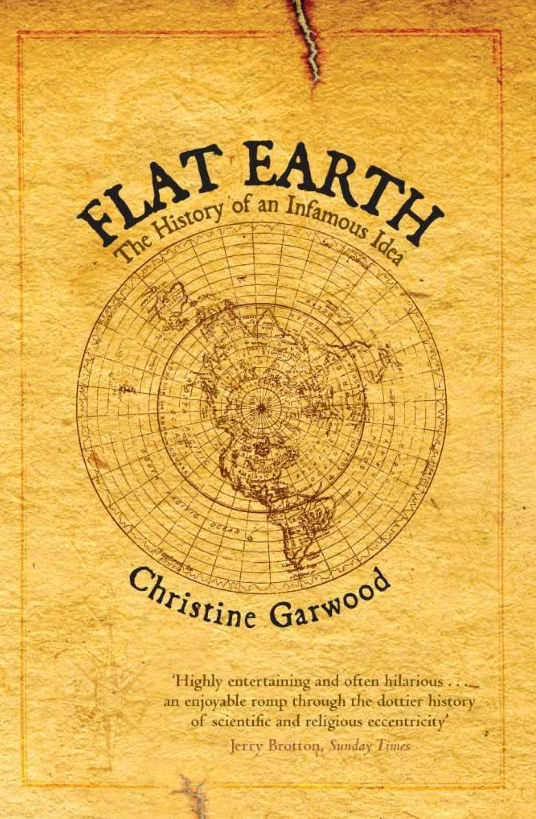 Until I read Christine Garwood’s book Flat Earth: The History of an Infamous Idea my idea of people out there who really believed the earth is flat was that they could only be as mysterious and unfathomable as leprechauns. But they really have existed these past 200 years and courageously taken on the whole world in what they have believed is their fight for sanity and reason.
Until I read Christine Garwood’s book Flat Earth: The History of an Infamous Idea my idea of people out there who really believed the earth is flat was that they could only be as mysterious and unfathomable as leprechauns. But they really have existed these past 200 years and courageously taken on the whole world in what they have believed is their fight for sanity and reason.
The most enlightening insight I took from Garwood’s history is that flat-earthers for most part have been motivated by the same noble ideals as the best of us. It’s just that, well, they see things a little differently. Or rather, they see the same things we see but they want the rest of us either to use more common sense and/or have more faith in the Bible. They hate the idea that most of us are gullibly swallowing what the professional elites are trying to sell us. They want science democratized and the demos to be more true to God.
How can we fault anyone for living by such ideals?
Christine Garwood further informs us that much of the ridicule we direct at flat-earthers is fueled in part by our own ignorance. When we assume that flat earthers are no more advanced than the people of the dark ages or even earlier primitive times then we are actually demonstrating a key point of the flat-earthers. Flat earthers argue most of us blindly accept, uncritically and without any request for supporting evidence, whatever the professionals tell us. We trust too readily. Even many of the professionals are deluded. The fact is, and Garwood explains the evidence for this extensively, that since the fourth century BCE most people who are on record as having given the question any thought have believed the earth is round. How we came to think otherwise and how myths about Columbus became common knowledge is explained in the prologue and first chapter of Flat Earth. Hint: Washington Irving of Legend of Sleepy Hollow and Rip Van Winkle fame is largely to blame for the mischief.
That should be a mildly discomforting thought. If so, it segues into the questions of the relevance of the history of the flat earth movements. (We can’t have a history book that’s written just for entertainment alone, after all.) Continue reading “Inside the Minds of Flat-Earthers”

While we may have had to wait until the end of Mark’s story for the denouement of the secrecy gospel, Luke removes all suspense early on with the scene in the Nazareth synagogue (Luke 4:16-30). In The Messianic Secret, William Wrede writes:
Here Jesus reads out the words of Isaiah 61.1f. regarding the anointing for messianic vocation and then goes on to say, “Today this scripture has been fulfilled in your hearing”. But this is nothing other than a messianic self-proclamation, and if Luke in all probability made up this scene himself in so far as it is at variance with Mark, and certainly thought of it as an introduction determining the character of the presentation of the story which follows, yet one gains the impression that here he is doing something which Mark would hardly have done. However many contradictions may be found in Mark along with the idea of secret messiahship, this is on a different footing. It looks like a denial of the idea itself. (Wrede, 1901/1971, p. 178, emphasis mine)
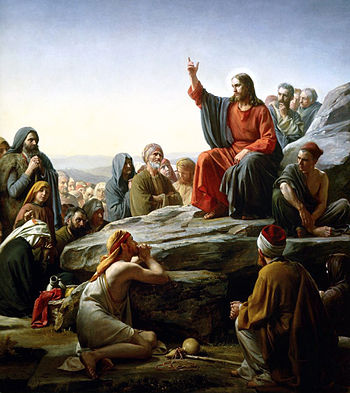
Luke’s Jesus does not hide his light under a bushel. He lets everyone know who he is. We can see the extent to which Luke has embraced this public, openly messianic Jesus even in the way he teaches the crowd.
Wrede makes the point that in Matthew, much of the instruction Jesus imparts to his disciples remains private. The Transfiguration, the prophecy of the passion, the meaning of parables, the “question about the last things,” etc. happen away from the crowds and sometimes away from the majority of the disciples. But that’s not all.
We may also mention that even the Sermon on the Mount is regarded as instruction of the disciples. For according to 5.1, when Jesus sees the crowds, he goes up the mountain and then the disciples approach him[*] in order to receive his teaching. This, of course, is again forgotten at the end of the sermon in 7.28.
[*] prosēlthan autō hoi mathētai, Matthew is very willing to say, even although they were already together with Jesus. Proserchesthai [coming near to, approaching] is generally used by him more often than in all the other New Testament writings put together. (Wrede, 1901/1971, p. 178)
In other words, Jesus is moving away from the crowd and up the mountain where he will give private (secret?) instruction. Apologetic and traditional commentators haven’t seen it that way, of course. Instead of retreating, they imagine that Jesus is simply getting a better vantage point from which to address the crowd. But the text is quite clear. Continue reading “Reading Wrede Again for the First Time (11)”

Romans 1:1-7 (YLT)
1 Paul, a servant of Jesus Christ, a called apostle,
having been separated to the good news of God —
2 which He announced before through His prophets in holy writings —
3 concerning His Son,
(who is come of the seed of David according to the flesh,
4 who is marked out Son of God in power, according to the Spirit of sanctification [=Holy Spirit], by the rising again from the dead,)
Jesus Christ our Lord;
5 through whom we did receive grace and apostleship, for obedience of faith among all the nations,
in behalf of his name;
6 among whom are also ye, the called of Jesus Christ;
7 to all who are in Rome, beloved of God, called saints; Grace to you, and peace, from God our Father, and [from] the Lord Jesus Christ!
Interpolation is a four letter word for some scholars: it can only be justified under extreme provocation such as when all the earliest witnesses leave not a shadow of doubt.
Such a standard flies in the face of what we know about the transmission of ancient manuscripts, especially the canonical ones. See Forgery in the ancient world and List of scholars believing Paul’s letters were interpolated. Nonetheless I can understand why some authors play it safe by being very reluctant to treat any passage in Paul’s letters as an interpolation unless supported by widely acknowledged arguments. I’m not so conservative. If only one scholar produces very sound arguments that his or her peers fail to address then I’m willing to take the possibility of interpolation seriously.
So much for the preamble.
Sparks have flown between Christ Myth advocates and their opponents over the opening passage in Paul’s epistle to the Romans that declares Jesus Christ to be “of the seed of David according to the flesh” but these verses may have another significance for our understanding of how early Christian ideas evolved. So forget the mythicist debate for a moment.
Many of us are aware of Hermann Detering’s arguments for Romans 1:2-6 being an interpolation laden with anti-Marcionite innuendo. I won’t repeat those here. Consider this a related post.
I have also posted the 1942 argument of A. D. Howell-Smith for Romans 1:3 (who is come of the seed of David) being an interpolation. Again, consider this post related.
Alfred Loisy (1935) makes a passing reference to Romans 1:3-4 (see the bolded passage in the side box) being a likely interpolation in Remarques sur la littérature épistolaire du Nouveau Testament, p. 9. These lines are anomalous padding within a standard introduction.
J. C. O’Neill in Paul’s Letter to the Romans (1975) published a detailed argument for why we should consider all of verses 1b to 5a as an interpolation. (See the indented lines in the side-box. He also found the words I have italicized intrusive.) It is O’Neill’s discussion pages 25 to 28 that I set out below.
Normal introductions were as simple as possible. Example:
Demophon to Ptolemaeus, greeting.
Affectionate and official letters could be elaborated a little:
Apion to Epimarchus his father and Lord, heartiest greetings.
Polycrates to his father, greeting.
Claudius Lysias to his Excellency the governor Felix, greeting. (Acts 23:26)
James, a servant of God and of the Lord Jesus Christ, to the twelve tribes in the Dispersion, greeting. (James 1:1)

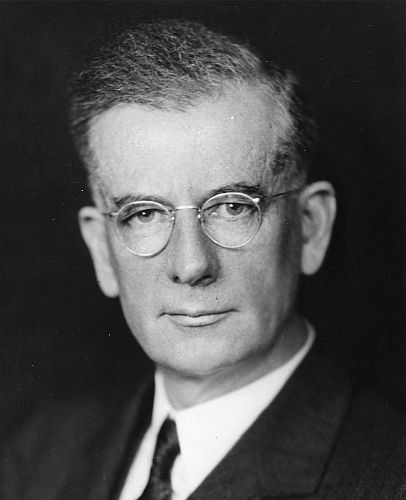
Way back in the previous century, I attended Ohio University at Athens. A young, naive freshman, I headed off one gloomy autumn day to the campus library, searching for source material for an astronomy paper. The stacks were vast; I was looking at more books than I had ever seen in one place.
By New World standards, OU is an old school, founded in 1804, the year after Ohio entered the Union. They’ve been gathering books and periodicals for quite some time.
According to Wikipedia, the Vernon R. Alden Library has switched completely from the Dewey Decimal System to the Library of Congress System. However, back in 1977 they were still in transition. All the old books were in Dewey, but the staff were categorizing new acquisitions using LOC codes. I gravitated to the old stacks, perhaps because I was more comfortable with the older numbering system. Or maybe I just like the smell of old books.
At any rate, that day I came upon Fred Hoyle’s Astronomy from 1962. Hoyle, of course, believed in the Steady State theory of the universe. This was my first introduction to it, and I found it fascinating. So I wrote a short paper on the subject, based on Hoyle’s treatment. What my naive freshman self didn’t know was that just a couple of years after Hoyle published Astronomy, Arno Penzias and Robert Wilson found the echo of the Big Bang — background radiation evenly spread throughout the sky, compelling evidence for the origins of our universe.
[I find it mildly ironic that while writing this post, news has arrived that calls into question the Big Bang. Try wrapping your head around this: “Brian Koberlein from the Rochester Institute of Technology pointed out that while it may appear that the study suggests that the Big Bang did not happen, the event still occurred.“]
While reading Shirley Jackson Case’s The Historicity of Jesus, I was reminded of that incident from my youth. As I recall, the teacher’s aide who graded my paper was more forgiving than I deserved. But I learned my lesson. It’s all right to have some familiarity with older research, but the careful student will always keep up with the most recent work in the field.
On the bright side, because Case’s book is over a century old Google (before it lost interest in such altruistic efforts) has lovingly scanned it and put on line. You can even download a PDF copy or read it at archive.org. On the other hand, because he wrote it nearly 103 years ago, some of the arguments are a little stale. Continue reading ““It is absurd to suggest . . .” — Shirley Jackson Case on The Historicity of Jesus“

Otagosh: See Theology, hairdressing and Huns
One parenthetical comment in particular caught my eye:
(My impression is that, rather than appealing to hard core fundamentalists, Wright’s following consists of many thoughtful but compromised evangelicals who are looking for a hero, someone who can provide a much-needed intellectually sound defence of their faith. . . . The writer also points out that this sort of evangelical fan-theology has a long track record. . . .) Continue reading “Once more on Paul Holloway and N.T. Wright’s Honorary Doctorate”

 The reality of Palestine’s long history from the Bronze Age to the present has been lost behind the myths of the Bible.
The reality of Palestine’s long history from the Bronze Age to the present has been lost behind the myths of the Bible.
Think of Palestine’s past and images of Israel displacing the Canaanites from around 1200 BCE, establishing a united kingdom, even an empire, under King David and then his son Solomon slip easily into our minds. We think of the divided kingdom: apostate Israel in the north ruled from Samaria and Judah in the south with its Jerusalem temple. We know these kingdoms were removed by the Assyrians and Babylonians by around 600 BCE and that the Jews returned once again after a period of captivity.
And they re-returned to “the land of their fathers” to “re-establish the Jewish State” as proclaimed in Israel’s Declaration of Independence of 1948. The historical right of the Jews to the land of Palestine remains evident today to possibly most Christians and anyone taught this historical outline.
Archaeological-Historical Periods in Palestine
The question we might ask, then, is what is the history of the Palestinians? The biblical narrative leaves them no room for a history in the land. Are they late trespassers? Are they rootless Arabs with no genuine attachment to any land in particular?
Until his retirement Keith Whitelam was Professor and Head of the Department of Religious Studies at the University of Stirling and Professor and Head of the Department of Biblical Studies at the University of Sheffield. His recent publication, Rhythms of Time: Reconnecting Palestine’s Past, surveys the archaeological evidence for the history of Palestine from the Bronze Ages through to the end of the Iron Ages and compares what he sees with the Palestine from more recent times according to travelers’ reports and current geo-political maneuverings.
He concludes that our Western view of Palestine’s history has been determined by the biblical narrative and conflicts with the archaeological evidence before us.
The past matters because it continues to flow into the present. However, Palestine has been stripped of much of its history in the nineteenth and twentieth centuries. It is as though Palestine only came into being with the British Mandate (1920-48) and came to an end with the declaration of the modern state of Israel (1948). The growth of towns, the shift in villages, or the population movements of three millennia before have become divorced from this ‘modern’ Palestine. (Kindle Locations 42-46).
Whereas others who have been gaining their independence from imperial domination ever since the nineteenth century and especially since World War 2 have been able to construct their own national histories as an essential part of their national identities, Continue reading “The Rhythms of Palestine’s History”